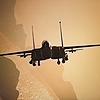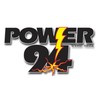HOME | DD
 bagera3005 — Tsybin RSR OKB-256
by
bagera3005 — Tsybin RSR OKB-256
by

Published: 2009-07-20 05:27:05 +0000 UTC; Views: 6574; Favourites: 42; Downloads: 731
Redirect to original
Description
The preliminary project for the revised aircraft, able to take off in the conventional manner, was dated 26th June 1957. Design proceeded rapidly, and in parallel OKB-256 created a simplified version, using well-tried engines, which could be got into the air quickly to provide data (see NM-1, next). These data became available from April 1959, and resulted in significant changes to the RSR (see R-020). The basic design, however, can be described here.Though the RSR was derived directly from the 2RS, it differed in having augmented bypass turbojet engines (low-ratio turbofans) and strengthened landing gear for conventional full-load take-offs. A basic design choice was to make the structure as light as possible by selecting a design load factor of only 2.5 and avoiding thermal distortion despite local skin temperatures of up to 220°C. By this means the use of steel and titanium was almost eliminated, though some skins (ailerons, outer wing and tail torsion boxes) were to be in aluminium/ beryllium alloy. As before, the wing had a t/c ratio of 2.5 per cent, 58° leading-edge sweep and three main and two secondary spars. The tips, 86mm deep, carried Solov'yov D-21 bypass engines. These bore no direct relationship to today's D-21A1 by the same design team. РСРThey were two-shaft engines with a bypass ratio of 0.6, and in cruising flight they were almost ramjets. Sea-level dry and augmented ratings were 2,200kg (4,850 lb) and 4,750kg (10,472 lb) respectively. Dry engine mass was 900kg (l,984 1b) and nacelle diameter was 1.23m (4ft 1/2in). The fuselage had a fineness ratio of no less than 18.6, diameter being only 1.5m (4ft 1 lin). All tail surfaces had a t/c ratio of 3.5 per cent, and comprised a onepiece vertical fin with actuation limits of ±18° and one-piece tailplanes with limits of + 10°/-25°. All flight controls were fully powered, with rigid rod linkages from the cockpit and an artificial-feel system. The main and steerable nose landing gears now had twin wheels, and were supplemented by singlewheel gears under the engines, all four units hydraulically retracting to the rear. A braking parachute was housed in the tailcone. A total of 7,600kg (16,755 lb) of kerosene fuel was housed in integral tanks behind the cockpit and behind the wing, plus 4,400kg (9,700 Ib) in two slender (650mm, 2ft 1 V-im diameter) drop tanks. An automatic trim control system pumped fuel to maintain the centre of gravity at 25 per cent on take-off, 45.0 in cruising flight and 26.4 on landing. In cruising flight the cockpit was kept at 460mm Hg, and the pilot's pressure suit maintained 156mm after ejection. Компоновка РСРAn APU and propane burner heated the instrument and camera pallets which filled the centre fuselage, a typical load comprising two AFA-200 cameras (200mm focal length) plus an AFA-1000 or AFA-1800 (drawings show four cameras), while other equipment included optical sights, panoramic radar, an autopilot, astro-inertial navigation plus a vertical gyro, a radar-warning receiver and both active and passive ECM (electronic countermeasures)
During construction this aircraft was modified into the RSR R-020.
Design OKB-256 P.V.Tsybin
Type RSR
Function strategic reconnaissance
Crew 1
Dimensions & Weight
Length (ignoring nose probe), m 27,4
Wing Span, m over engines 10,23
ignoring engines 7,7
Aspect ratio of wing 1,67
Wing area, m2 64
Overall height, m 4,75
Equipment weight, kg 1850
Вес конст




 yкции плане
yкции плане



 а, кг 4050
а, кг 4050Take-off weight, kg 21000
Empty weight, kg 7700
Landing weight, kg 9200
Power-plant
Engine 2 ТРДД Д-21
Trust, kgf take-off 4500-5000
M=2,5 at altitude 20 km 2200
Engine weight, kg 2200
Fuel weight 10700 (12000)
Performance (project)
Speed, km/h (M




 max 2800 (2,65)
max 2800 (2,65)cruise 2,56
landing 220
Range, km 3760
Practical ceiling, m 26700
Dinamic ceiling, m 42000
Take-off run, m 1200 (1300)
Landing run, m 1350 (1200)
Art Trade Kryptid [link]
Related content
Comments: 5

👍: 0 ⏩: 0

👍: 0 ⏩: 0

👍: 1 ⏩: 0

Hey Mike, can you do this?
www.testpilot.ru/russia/tsybin…
👍: 0 ⏩: 0

Looks vaguely like the XF-109... probably because of similar performance requirements.
👍: 0 ⏩: 0

















